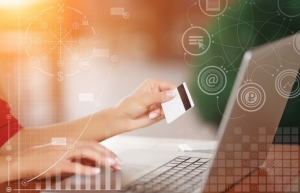Small banks face up to liquidity pressures
Despite easing to 4.6 per cent for overnight transactions in the latest adjustment, interbank rates have risen sharply since the start of the fourth quarter, peaking at 5.5 per cent on November 4, the highest in 19 months, fuelling growing concerns over liquidity risks.
 |
| Small banks face up to liquidity pressures, photo: baodautu.vn |
According to Vietnam Investors Service’s (VIS) November 20 banking report, small and medium-sized banks are facing the greatest pressure from narrowing net interest margins and rising credit costs.
“The sector’s return on average assets declined slightly to 1.5 per cent in the first nine months of the year from 1.6 per cent in H1, with smaller banks most impacted by shrinking net interest margin (NIM) and higher credit costs,” VIS said. “Liquidity risks for such banks have increased due to reliance on short-term market funding amidst slow deposit growth and surging interbank rates.”
By the end of 2024, improved growth in high-yield mortgage lending and slowing new non-performing loans are expected to stabilise profitability and asset quality for smaller banks, it added.
VIS highlighted that sector-wide profit growth has slowed, driven by tighter NIM, with small banks additionally burdened by elevated funding costs. Prolonged high interbank rates could exacerbate liquidity risks.
“Liquidity risks are rising as banks increasingly rely on short-term market funding, while interbank rates surge. Current account savings account ratios remained stable at 19 per cent of total customer loans in the first nine months. OCB posted the largest on-quarter increase of 3 per cent, supported by digital transformation efforts.”
The loan-to-deposit ratio remained high at 106 per cent, with banks such as Viet Capital Bank, ABBank, LPBank, Nam A Bank, and Vietnam Maritime Bank raising deposit rates and increasing short-term interbank borrowing to maintain liquidity, added VIS.
According to MBS Securities, small- and medium-sized banks are under liquidity pressure due to three main factors. “Firstly, the central bank’s consistent net withdrawals aimed at stabilising exchange rates. Secondly, year-end liquidity volatility caused by increased credit disbursement and a surge in public investment. Lastly, the Treasury’s withdrawal of over $4.5 billion from three major banks during the third quarter.”
Recent money market developments coincide with the year-end peak in credit growth. The upward trend in deposit rates is unlikely to continue, putting pressure on smaller banks.
“Short-term deposit rates have risen due to a shift in banks’ medium- and long-term funding strategies towards corporate bonds. Data from the Hanoi Stock Exchange shows banks issuing significant volumes of bonds, both public and private, worth trillions of VND in recent months,” said a Viet Dragon Securities Corporation representative.
As the year-end approaches, banks have frequently adjusted deposit rates upward. A survey indicates over 10 banks, including GPBank, LPBank, Nam A Bank, VIB, and Viet A Bank, have raised deposit rates since early November.
However, Vietcombank Securities (VCBS) predicted that further deposit rate hikes are unlikely in the remainder of 2024 and would vary by bank group. “State-owned banks are expected to maintain current rates or slightly reduce them to support the economy, particularly in response to Typhoon Yagi’s impact,” it said.
Private commercial banks have reduced lending rates more aggressively than state-owned banks to pull in new customers amidst weak credit demand. These banks have also provided rate cuts or debt extensions to support struggling existing customers.
VCBS expects lending rates to remain low, prioritising credit growth. “State-owned banks will continue reducing rates to assist clients affected by Typhoon Yagi, covering existing and new loans through year-end. Meanwhile, private banks face competitive pressures to lower lending rates to boost credit and attract high-quality customers,” VCBS said.
Phan My Hanh, director of the Retail Product Centre at VPBank, explained, “VPBank has reduced interest rates by over 1 per cent annually for individual consumer loans and 0.5-1 per cent for small business loans, particularly for clients affected by recent storms. The bank has committed to disbursing at least $104 million for social housing loans.”
 | Liquidity pressure “substantial” on Vietnam’s banks Intense liquidity pressures and surging interest rates are anticipated in the domestic banking sector as the year-end approaches. |
What the stars mean:
★ Poor ★ ★ Promising ★★★ Good ★★★★ Very good ★★★★★ Exceptional
Related Contents
Latest News
More News
- Stock market starts 2026 with growth and governance in focus (January 06, 2026 | 08:45)
- Cake by VPBank posts strong gains in scale and efficiency leveraging AI focus (January 05, 2026 | 18:55)
- Banks step up listing plans in 2026 to strengthen capital and transparency (December 31, 2025 | 18:59)
- Ho Chi Minh City projects $10.5 billion remittance inflows in 2025 (December 31, 2025 | 18:58)
- New decree sharpens enforcement in securities market (December 31, 2025 | 18:53)
- Gold market reform advances as SBV receives applications for bullion production (December 30, 2025 | 12:07)
- EVN and AFD sign credit agreement for Vietnam’s first pumped storage hydropower plant (December 30, 2025 | 10:06)
- Techcombank Priority Visa Signature unlocks a higher standard of living (December 29, 2025 | 16:44)
- Tax sector wraps up 2025 and sets priorities for next year (December 25, 2025 | 14:00)
- A tipping point for digital and hybrid wealth management in Vietnam (December 23, 2025 | 13:33)

 Tag:
Tag:




















 Mobile Version
Mobile Version